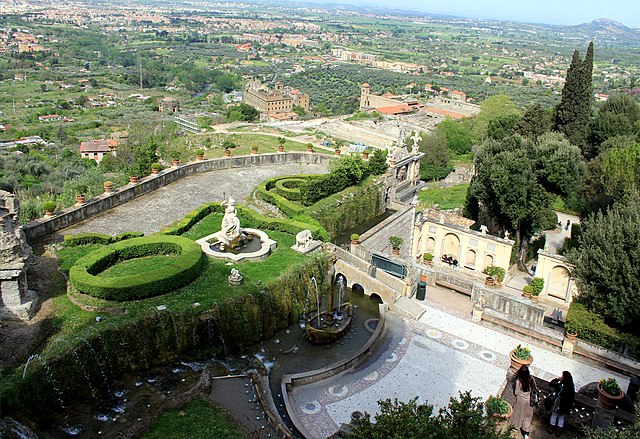
Home > World Gardens >
The Villa d'Este Gardens, located in Tivoli, Italy, are renowned for their exceptional Renaissance design, grandeur, and elaborate water features. These gardens are part of the Villa d'Este, a historic villa built during the Italian Renaissance.
The Villa d'Este was commissioned by Cardinal Ippolito II d'Este, the son of Alfonso I d'Este, Duke of Ferrara. Construction of the villa and gardens began in 1550 and was completed in 1572. The villa served as a residence for the cardinal and later became a property of the Este family.
The Villa d'Este is located in Tivoli, a town in the Lazio region of Italy, approximately 30 kilometers east of Rome. It is perched on a hillside, providing panoramic views of the surrounding landscape.
The villa itself is a masterpiece of Renaissance architecture, attributed to the architect Pirro Ligorio. The gardens, however, are perhaps even more famous for their innovative and grand design.
One of the defining features of the Villa d'Este Gardens is its intricate system of water features, including fountains, cascades, and water jets. The water elements are powered by a complex network of aqueducts and hydraulic machines, creating a captivating display of water in various forms.
One of the most iconic features within the gardens is the "Hundred Fountains" (Cento Fontane). This long stone terrace is adorned with numerous small fountains, creating a continuous flow of water and a symphony of water sounds. The design is a remarkable example of hydraulic engineering from the Renaissance period.
At the center of the garden, the Oval Fountain (Fontana dell'Ovato) is surrounded by a double staircase leading to the terraces above. The fountain is adorned with sculptures and provides a focal point for the garden's layout.
Another notable feature is the Water Organ Fountain (Fontana dell'Organo), which includes a hydraulic organ that plays music using the movement of water. It is one of the earliest examples of a water-powered musical instrument.
The Fountain of Neptune (Fontana di Nettuno) is a majestic fountain featuring a sculpture of Neptune, the Roman god of the sea. It is positioned at the end of the Vialone, a long path leading through the gardens.
Throughout the gardens, visitors will find an array of classical statues, sculptures, and architectural elements that enhance the aesthetic appeal and cultural significance of the site.
In 2001, the Villa d'Este, including its gardens, was designated a UNESCO World Heritage Site. The recognition acknowledges the cultural and historical importance of this Renaissance masterpiece.
The Villa d'Este Gardens continue to attract visitors with their harmonious blend of architecture, water features, and natural surroundings, providing a glimpse into the artistic and engineering achievements of the Italian Renaissance.

(Image:By Karelj - Creative Commons)
To find out more about Villa d'Este Gardens, or if you want to visit, Click Here.
Royal Botanic Gardens Victoria
Melbourne, Australia
Lalbagh Botanical Garden
Bangalore, India
Medellin Botanical Garden
Medellin, Columbia
RHS Harlow Carr
Harrogate, United Kingdom
Powerscourt Gardens
Enniskerry, Co. Wicklow, Ireland
Vallarta Botanical Garden
Vallarta, Mexico